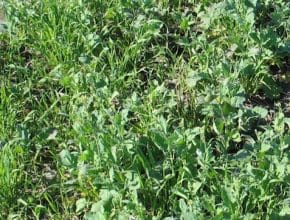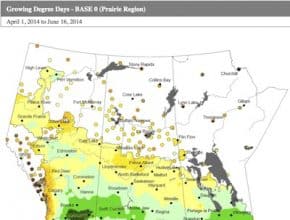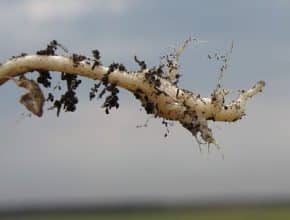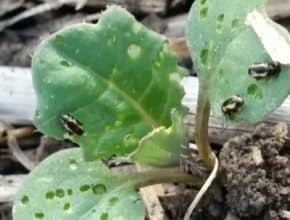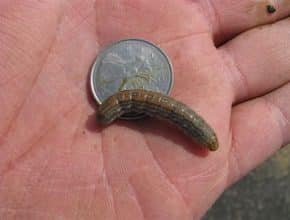Two-hit wonder. Does your canola really need a second in-crop herbicide application? Only certain circumstances — like the one photographed above — make it worthwhile. Summer heat A new PAMI project will look into summer effects on stored canola, and help set best practices to prevent heating: Aerate to warm it, turn it to warm it, or just leave it…
June 18, 2014 - Issue 11
-
-
-
In this week's quiz, we ask you to identify five weeds — including the one above. With the answers, we also provide useful agronomy information for each weed…
-
Growers who usually spray twice may not need that second pass this year if the canopy has closed, weeds are behind the crop, and the recommended application window is past. The crop should outcompete the weeds all on its own, and the economic benefit of the second herbicide application just won’t be there. But if the crop looks like the…
-
The longer a herbicide sits in a sprayer, the greater the risk that it is going to hang up in the tank. Sprayers should be cleaned at the end of every work day regardless if the same product or tank mix is being sprayed the following day…
-
Early mornings and evenings when conditions can be the best for spraying can also be the worst because of possible air temperature inversions. Air temperature inversions — when air temperatures actually increase as you get higher above the ground — create ideal conditions for tiny spray droplets to become suspended in the air and drift considerable distance from their target…
-
Research has confirmed the presence of a different clubroot pathotype in the Edmonton region and none of the commercially available clubroot resistant varieties in Western Canada are effective at managing it. Stephen Strelkov, the University of Alberta researcher leading this project, has identified other resistance genes that could work, but they are not currently in commercial hybrids…
-
Striped flea beetles, shown above, seem to have become the dominant species in many regions, with crucifer species harder to find. This has been observed in fields in central Alberta, in particular. Research shows that striped flea beetles emerge earlier than crucifer flea beetles, so one thought is that the crucifers have not emerged, yet. However entomologists expect that most,…
-
Cutworm scouting begins with a walk through the field looking for bare patches, chewing damage in foliage, or clipped plants. If you find patches of missing or damaged plants, dig around healthy plants next to the missing of damaged plants. Cutworms have likely moved on to these nearby healthy plants. Many cutworms are underground during the day or feed only…

